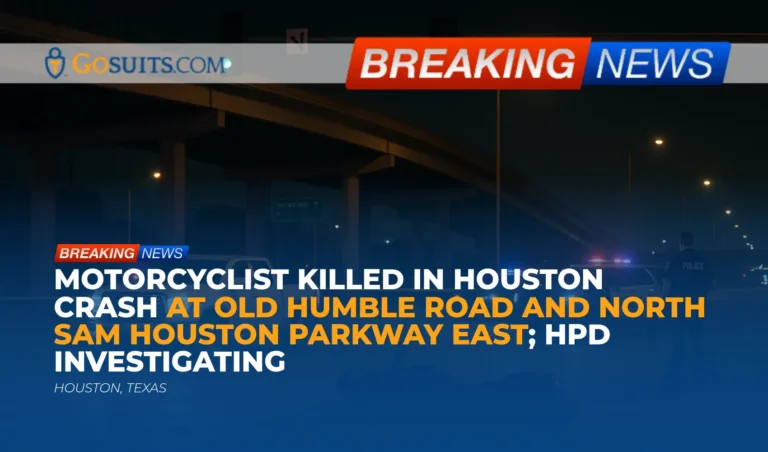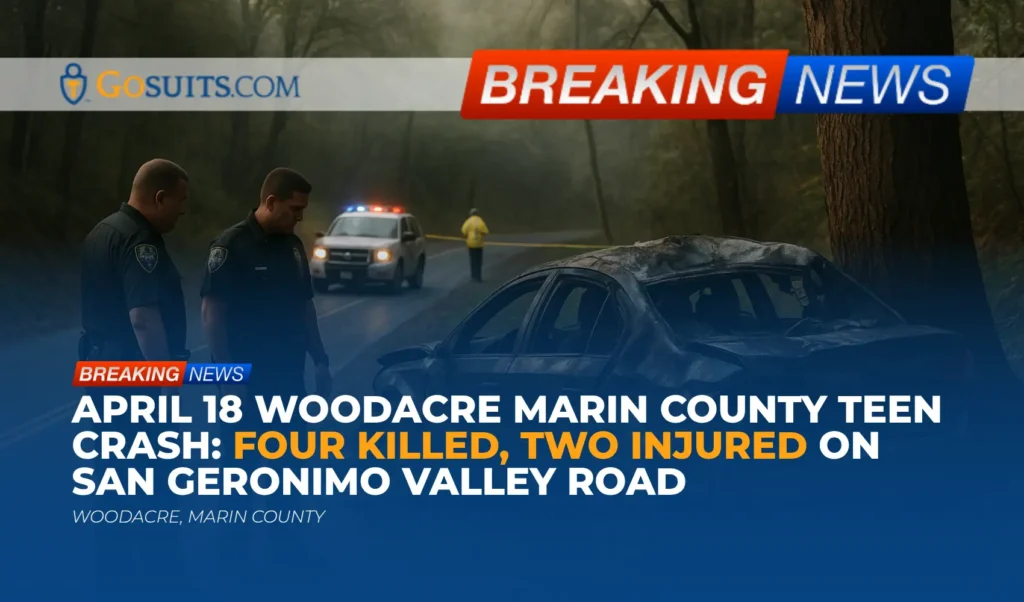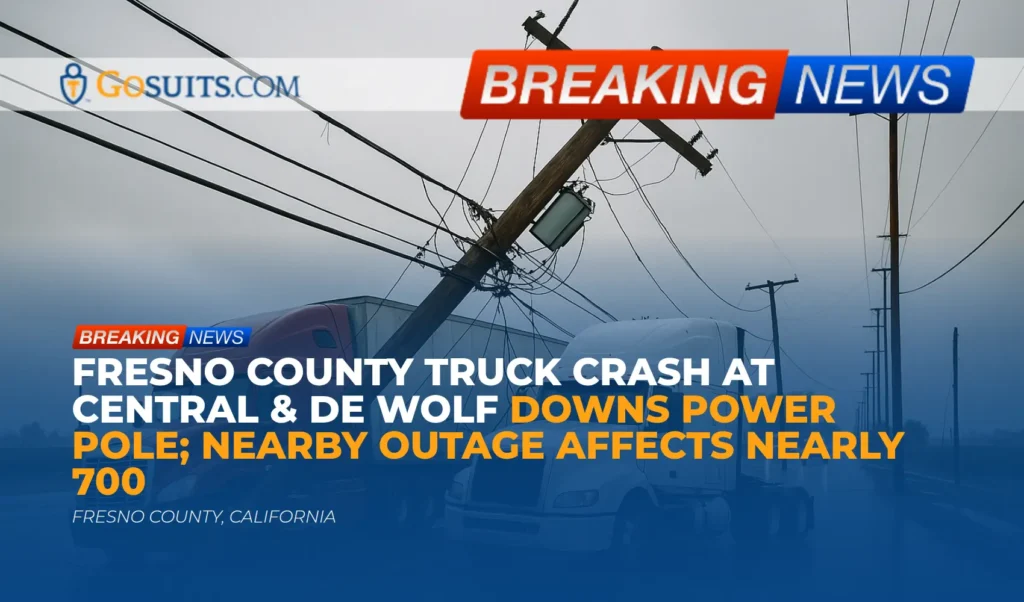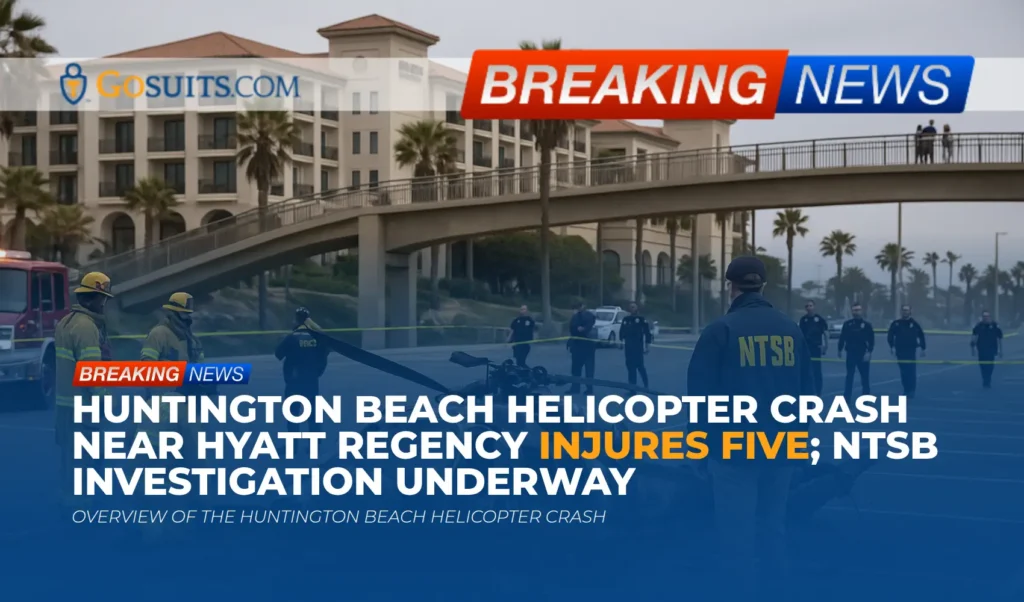- What we know about the crash on Old Humble Road and North Sam Houston Parkway East
- Location context and roadway features
- Initial legal observations from a personal injury perspective
- How investigations typically proceed in a fatal intersection collision
- Evidence families may seek and where to obtain it
- Rights of surviving family under Texas law
- Potential insurance coverages that may be implicated
- Time limits to bring claims in Texas
- Safety considerations for motorcyclists and drivers at signalized intersections
- How to preserve your rights after a serious crash
- Commentary from Gosuits Houston, Texas Personal Injury Attorney
- Action steps to protect legal rights now
What we know about the crash on Old Humble Road and North Sam Houston Parkway East
Houston Police Department reported a fatal crash at approximately 11:10 p.m. on Sunday, October 12, at the 15000 block of Old Humble Road. According to HPD’s Vehicular Crimes Division, a white GMC Denali was traveling northbound at the location while a maroon Harley Davidson motorcycle was eastbound on North Sam Houston Parkway East. Preliminary information indicates the motorcycle operator did not stop at a red light and struck the GMC. The motorcyclist was ejected, transported by EMS to a nearby hospital, and pronounced deceased. The occupants of the GMC were not injured. The investigation remains open. The identity of the deceased, a 50-year-old male, is pending next-of-kin notification by the Harris County Institute of Forensic Sciences.
This article summarizes the public facts available and provides general legal context and practical resource information for families affected by serious traffic incidents in the Houston area.
Location context and roadway features
Old Humble Road and the nearby frontage and crossing movements with North Sam Houston Parkway East are frequented by a mix of local and through traffic. Signalized intersections in such areas often involve multiple lanes, turn bays, and high-speed approaches on the parkway frontage. After-dark conditions can increase complexity, particularly for drivers and riders judging signal phases and cross traffic at higher speeds.
While investigators will determine precise contributing factors, intersection crashes can be influenced by signal timing, visibility, driver behavior, speed, and lane control. Federal and state safety agencies recognize intersections as higher-conflict zones where multiple paths cross and angle impacts can be severe. For more on intersection safety, see the Federal Highway Administration’s overview of intersection safety strategies at FHWA Intersection Safety.
Initial legal observations from a personal injury perspective
Texas law requires drivers facing a steady red signal to stop before entering the intersection. Texas Transportation Code section 544.007 outlines the obligations for traffic-control signals, including the duty to stop on a steady red indication. You can review the general signal rule in the Texas Transportation Code at Tex. Transp. Code § 544.007.
When a crash occurs at a signalized intersection, the civil inquiry typically focuses on whether one or more parties failed to follow traffic laws or otherwise acted unreasonably under the circumstances. In Texas, civil liability is assessed under principles of negligence and proportionate responsibility. If more than one party contributed to a collision, fault may be divided among them under Texas’s proportionate responsibility statute. See Tex. Civ. Prac. & Rem. Code ch. 33.
It is important not to presume the final allocation of responsibility early in an investigation. Even where a red signal violation is reported, investigators may examine issues such as signal operation and visibility, speed of approaching vehicles, lighting, lane use, and whether other avoidable risks contributed to the outcome.
How investigations typically proceed in a fatal intersection collision
In Houston, serious and fatal crashes are investigated by specialized HPD units. Investigators generally document the scene, photograph physical evidence, map vehicle rest positions, and note roadway characteristics such as skid marks, gouge marks, debris fields, and signal infrastructure. They may seek witness statements, vehicle data (if available), and any nearby traffic or security camera footage.
Because the collision involved an ejection from a motorcycle, investigators often pay close attention to point of impact, angles of travel, helmet and protective gear evidence, and potential pre-impact braking or evasive maneuvers. They may analyze signal timing logs, if available, and canvass for witnesses and cameras that could confirm signal phase sequences at the time of the crash.
The Harris County Institute of Forensic Sciences typically oversees next-of-kin notifications, may conduct postmortem examinations, and prepares reports that can assist in understanding injury mechanisms and timing. Information for families is available through the Institute’s public pages at Harris County Institute of Forensic Sciences.
Evidence families may seek and where to obtain it
Families often need to locate and secure key records in the weeks following a fatal crash. Below are common items and where they are typically found in the Houston region. When requesting records, carefully follow agency instructions. If there is any uncertainty about whether requesting certain documents could affect civil claims, consider consulting a qualified attorney before making recorded statements or formal submissions.
Police crash report and related records
In Texas, law enforcement submits crash reports using the CR-3 form. Many municipal crash reports are available through the state system maintained by the Texas Department of Transportation. Agencies also provide records through their own records divisions. For Houston cases, starting points include:
- HPD Records Division: Information on requesting police records is available on the City of Houston’s official site at Houston Police Department. Look for the Records Division or Police Reports section for instructions on how to request crash reports and incident records.
- Statewide crash reports: TxDOT administers statewide crash reporting and access. Guidance on crash reports and records is available from the Texas Department of Transportation at Texas Department of Transportation. Navigate to the Crash Reports and Records section for instructions on obtaining a CR-3 report.
- Public Information Act requests: For 911 audio, CAD logs, or certain investigative records, the City’s Public Information Act portal is at City of Houston Public Information Requests.
Note that some active investigative materials may be withheld or redacted under Texas law until the investigation concludes, and certain privacy protections apply.
Medical examiner/autopsy file
The Harris County Institute of Forensic Sciences handles medicolegal death investigations in the county. Families can find decedent services information, case status updates, and instructions for requesting autopsy reports at Harris County Institute of Forensic Sciences. Autopsy and toxicology report availability may depend on the status of testing and the investigation.
Death certificate
Certified death certificates are issued through the Texas Department of State Health Services Vital Statistics Section. These documents are often required for insurance, probate, and benefits matters. Information on obtaining death records is available at Texas DSHS Death Records.
Signal timing and traffic engineering records
For intersection crashes, signal timing plans, maintenance logs, or engineering records may be relevant. In Houston, traffic signals are managed by Houston Public Works. Requests for technical records typically go through the City’s Public Information Act process. General information about Houston Public Works can be found at Houston Public Works, and public-record requests can be made via the City’s portal at City of Houston Public Information Requests.

Hospital and EMS records
Emergency medical services and hospital records can provide important timelines and clinical findings. These records are protected by privacy laws and usually require appropriate authorization from next of kin or estate representatives. If the incident involved Houston Fire Department EMS, relevant records may be requested through the City’s Public Information process at City of Houston Public Information Requests.
Rights of surviving family under Texas law
Texas law provides civil remedies after a fatal incident caused by the wrongful act, neglect, carelessness, unskillfulness, or default of another. Two distinct but related avenues may be available in a fatal crash:
- Wrongful death claim: Brought by certain surviving family members for their own losses resulting from the death, such as loss of companionship and financial support. See Tex. Civ. Prac. & Rem. Code ch. 71.
- Survival claim: Brought on behalf of the decedent’s estate for damages the decedent could have pursued had they lived, such as conscious pain and medical expenses incurred prior to death. This is also addressed in Chapter 71.
Texas uses proportionate responsibility to allocate fault when multiple parties contribute to an incident. If a case proceeds, the trier of fact may assign percentages of responsibility to the involved parties. A party who is more than 50 percent responsible generally cannot recover damages under Texas’s modified comparative responsibility framework. See Tex. Civ. Prac. & Rem. Code ch. 33.
The availability, scope, and amount of any recovery depend on the facts and applicable law. Families often benefit from early clarity on insurance coverages, potential defendants, and key timelines.
Potential insurance coverages that may be implicated
Motor vehicle crashes can involve multiple insurance policies. Depending on the circumstances, the following coverages may be relevant:
- Liability coverage: Pays for bodily injury or property damage caused by a covered driver, up to policy limits.
- Uninsured/Underinsured Motorist (UM/UIM): Can provide benefits when an at-fault driver lacks insurance or has insufficient limits. In Texas, UM/UIM must be offered and applies unless rejected in writing. See Tex. Ins. Code § 1952.101 et seq..
- Personal Injury Protection (PIP): Offers certain medical and related benefits regardless of fault, unless rejected in writing. See Tex. Ins. Code § 1952.151 et seq..
- Medical Payments (MedPay): Optional coverage for medical expenses regardless of fault, if included in the policy.
- Employer or commercial policies: If a vehicle was being used for work or was part of a company fleet, commercial policies may be implicated.
- Umbrella or excess insurance: Additional coverage that may apply above primary liability limits.
Before contacting any insurance company for a recorded statement, consider speaking with a qualified attorney. What someone says early in the process can be used later, and policy rights can be complex, especially when multiple policies and coverages might apply.
Time limits to bring claims in Texas
Texas generally has a two-year limitations period for personal injury and wrongful death actions, calculated from the date of injury or death. See Tex. Civ. Prac. & Rem. Code § 16.003. There are exceptions and circumstances that may affect the calculation, such as claims against governmental units that involve special notice requirements, which can be much shorter than two years. Because deadlines are strict and missing them can bar a claim, timely attention to applicable time limits is important.
Safety considerations for motorcyclists and drivers at signalized intersections
Intersections present unique challenges because multiple traffic streams meet, turn, and cross. Even with an apparently clear path, late-phase signal changes, high approach speeds, and occluded sightlines can lead to severe angle impacts. National roadway safety resources emphasize defensive scanning, speed management, and recognition of vulnerable road users such as motorcyclists. For a national perspective on motorcycle and intersection safety, see NHTSA Motorcycle Safety and FHWA Intersection Safety.
Texas has specific laws that apply to motorcycles and their operators, including helmet regulations. Generally, riders under 21 must wear a helmet; riders 21 and older have additional requirements if they choose to ride without one. See Tex. Transp. Code ch. 661. Whether or not protective equipment was used in any specific incident is a fact issue for investigators, and discussion here is limited to general safety principles.
Drivers of passenger vehicles are reminded to watch for smaller road users, particularly at night and at intersections where motorcycles can be harder to see. Approaching a green signal with caution, allowing time for late cross traffic to clear, and scanning for smaller profiles can reduce collision risks.
How to preserve your rights after a serious crash
The period after a serious crash is overwhelming. Key steps can help protect legal rights and ensure accurate information is preserved:
- Request essential records methodically: Obtain the police crash report, 911 and CAD records, and contact the medical examiner’s office for case updates. Use official channels such as the City of Houston Public Information Requests portal, HPD Records, and the Harris County Institute of Forensic Sciences.
- Secure documentation: Preserve photos, video, clothing, helmet and gear, medical records, and any communications with insurers. Keep a timeline of events, symptoms, and expenses.
- Identify all potential insurance policies: Review auto, motorcycle, umbrella, and any employer-related coverage that could apply. Texas law on UM/UIM and PIP offerings can be found in the Insurance Code at Chapter 1952.
- Be cautious with insurance statements: Before giving a recorded statement to any insurance company, consider consulting a qualified attorney. Statements can affect how claims are evaluated and paid.
- Calendar deadlines: Track the two-year general limitations period noted in § 16.003 and any special notice requirements that could apply if a governmental entity is involved.
- Consider expert analysis: Depending on circumstances, accident reconstruction, signal timing analysis, and human factors assessments can clarify causation. These steps are commonly explored in complex intersection cases.
Commentary from Gosuits Houston, Texas Personal Injury Attorney
Our hearts go out to everyone affected by the fatal crash reported at Old Humble Road and North Sam Houston Parkway East. Losing a loved one in a sudden collision is devastating, and navigating information in the hours and days afterward can feel overwhelming. This commentary is intended for educational purposes and general information only.
Based on the initial information shared by HPD, investigators believe the motorcycle entered the intersection against a red signal and collided with a northbound GMC. Even when initial reports suggest a signal violation, it is prudent to allow the investigative process to run its course. Intersection collisions can raise additional questions about sightlines, human perception and reaction at night, approach speeds, lane positioning, and whether each participant had a reasonable opportunity to avoid impact. Thorough fact development is important before any final conclusions are reached about civil responsibility.
In our experience handling serious roadway cases, insurance carriers and large entities often move quickly after a crash. They may request recorded statements and seek documents before families have all the facts. Policy language, exclusions, and coordination between multiple coverages can be confusing, and statements made early can be cited later during claim evaluation. Being informed about the difference between liability coverage, UM/UIM, and PIP, and understanding how Texas proportionate responsibility works, can make a significant difference in protecting rights.
A no-cost consultation with a seasoned and skilled injury attorney can help families understand timelines, documents to request, and options for moving forward. Even a short conversation can provide clarity on which insurance policies may apply, what information is important to preserve, and how to handle requests from adjusters while an investigation is ongoing.

Action steps to protect legal rights now
When a serious or fatal crash occurs, time matters. These steps explain what to do next, why it is urgent, and how it helps protect legal interests:
- Obtain the official crash report promptly: The CR-3 crash report anchors insurance evaluations and is often required for claims. Request it through HPD or TxDOT once it is available. Acting early helps ensure accurate insurance claim setup and reduces delays.
- Request and preserve time-sensitive records: 911 audio, dispatch logs, and some video sources can be overwritten quickly. Submitting a Public Information Act request to the City of Houston early can preserve vital material that clarifies signal phases, response times, and witness accounts.
- Coordinate with the medical examiner and vital records: Follow the Harris County Institute of Forensic Sciences for case updates and the Texas DSHS for certified death certificates. These documents are foundational for benefits, insurance, and estate matters.
- Identify all potentially applicable insurance coverages: Determine whether UM/UIM, PIP, MedPay, or umbrella policies exist. Early identification allows for timely notice to carriers, which many policies require. Delays can complicate coverage.
- Document losses as they happen: Keep receipts, medical bills, funeral expenses, and records of lost income and services. Contemporaneous documentation strengthens claim presentation and reduces disputes later.
- Avoid recorded statements before getting legal guidance: Insurance adjusters often call quickly. Waiting to give recorded statements until after an initial legal consultation helps ensure rights are protected and that statements are complete and accurate.
- Track deadlines and special notices: In addition to the general two-year limitations period for wrongful death and personal injury in Texas, potential governmental notice requirements can be much shorter. Prompt assessment is crucial to avoid forfeiting claims.
- Consider early scene and vehicle preservation: If vehicles have not yet been disposed of, arrange for preservation or inspection when appropriate. Physical evidence such as damage patterns and onboard data, when available, can clarify how an impact occurred.
Helpful official resources
- Houston Police Department
- City of Houston Public Information Requests
- Harris County Institute of Forensic Sciences
- Texas DSHS Death Records
- Texas Department of Transportation
- Texas Transportation Code § 544.007
- Texas Transportation Code ch. 661
- Texas Civil Practice and Remedies Code ch. 33
- Texas Civil Practice and Remedies Code ch. 71
- Texas Civil Practice and Remedies Code § 16.003
- Texas Insurance Code ch. 1952
- FHWA Intersection Safety
- NHTSA Motorcycle Safety






